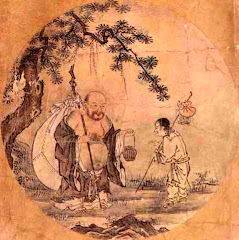
A person who escapes is not really a man of understanding. His very escape shows his fear, not understanding. If you say, "How can I be happy sitting in the marketplace? How can I be silent sitting in the marketplace?" and you escape to the Himalayan silence, you are escaping from the very possibility of ever becoming silent -- because it is only in the marketplace that the contrast exists; it is only in the marketplace that the challenge exists; it is only in the marketplace that distractions exist. And you have to overcome all those distractions.
If you escape to the Himalayas you will start feeling a little still, but at the same time a little stupid also. You will start feeling more silent, but that silence belongs to the Himalayas, not to you. Come back and your silence will be left behind -- you will come alone. And back in the world you will be even more disturbed than before, because you will have become more vulnerable, soft. And you will come with a prejudice, with this idea that you have attained to silence. You will have become more egoistic.
That's why people who have escaped to the monasteries become afraid of coming back to the world. The world is the test. The world is the criterion. And it is easier to be in the world and, by and by, grow into a silence, then the Himalayan silence comes into your being. You don't go to the Himalayas: the Himalayas themselves come to you. Then it is something of your own, then you are the master of it.
I don't teach escape. I also teach renunciation. Many people, orthodox, old people. come to me and they say, "What type of sannyas is this? People have taken sannyas -- they are still living in their families, with their wife, with their children. going to the office, to the factory, to the shop -- what type of sannyas is this?" They have only one conception of sannyas, a one dimensional conception -- of escape. This is multi-dimensional. It is renouncing and yet living here, dropping and yet not dropping, changing and yet remaining ordinary, transforming one's being totally and yet remaining in the ordinary world like everybody else.
The Zen concept of renunciation is my concept of renunciation also. But it is difficult because the world has been condemned so much that it has become almost unconscious; it has become habitual to think in terms of condemnation. If somebody says you are worldly, you feel hurt, insulted. When you want to condemn somebody, you call him worldly -- you have condemned him.
There is nothing wrong in being worldly. Be worldly, and yet remain unworldly -- that is the very art, the art of living between two opposites, balancing oneself between two opposites. It is a very narrow path, like a razor's edge -- but this is the only path. If you miss this balance, you miss truth.




No comments:
Post a Comment